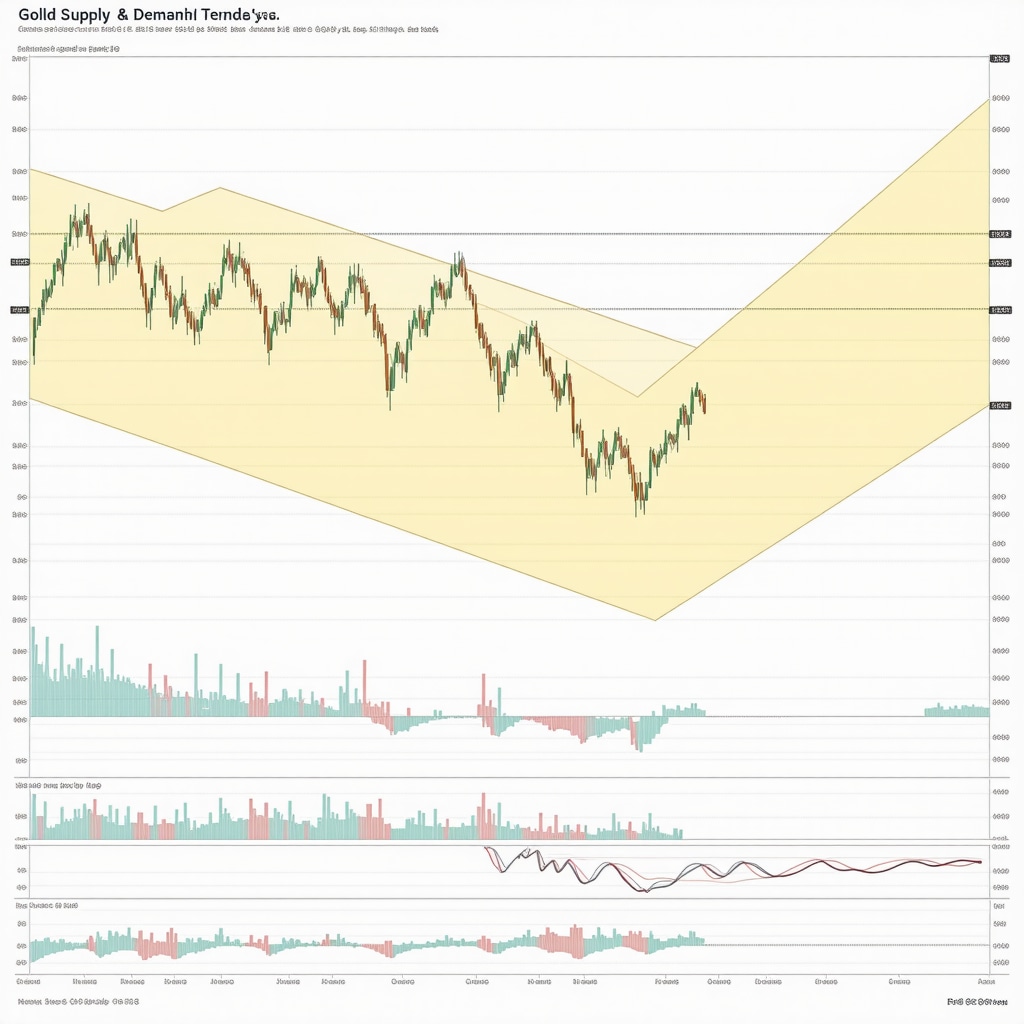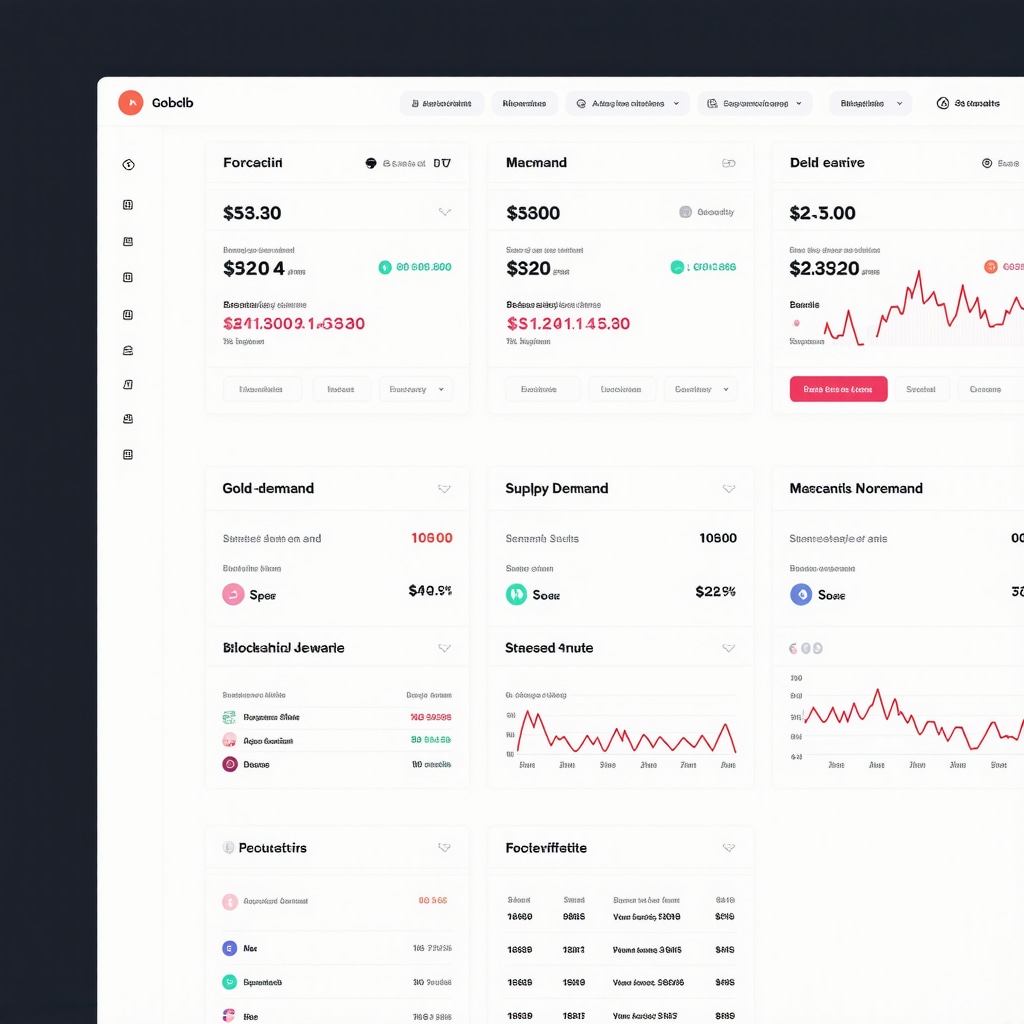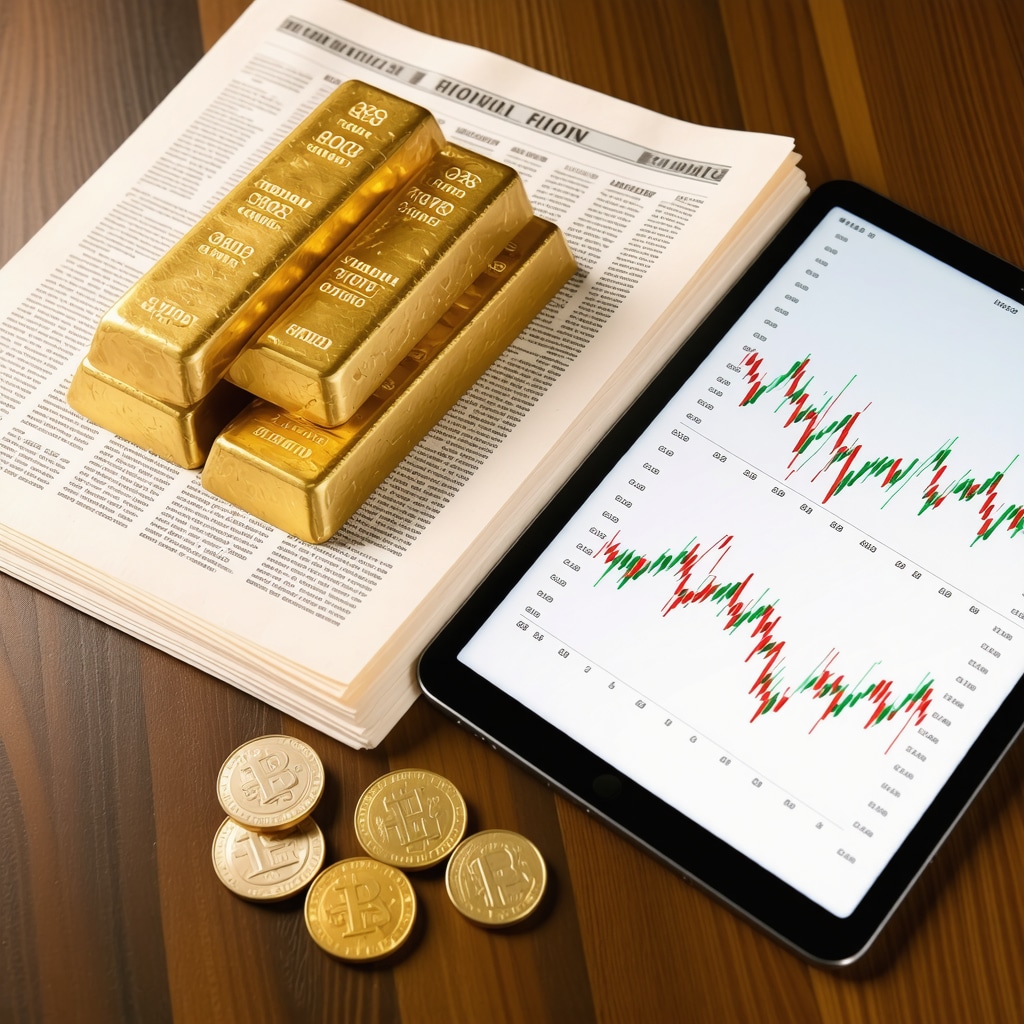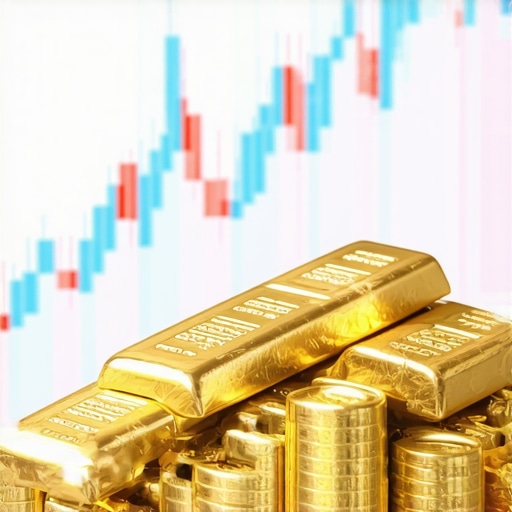Unraveling the Complex Interplay of Gold Supply and Demand in the 2025 Investment Landscape
In the realm of precious metals investment, understanding the intricate balance between gold supply and demand is paramount for crafting resilient, forward-looking strategies. As global economic uncertainties persist and geopolitical tensions influence market sentiment, the nuances of these dynamics become even more critical for institutional and individual investors aiming to optimize their portfolios for 2025 and beyond.
The Structural Foundations of Gold Supply: Mining, Recycling, and Central Bank Policies
Gold’s supply is primarily shaped by mining outputs, which are subject to geological, technological, and regulatory factors. Notably, the total annual mine production has plateaued in recent years, prompting investors to scrutinize secondary sources such as recycling of gold jewelry and industrial scrap. Furthermore, central bank policies—particularly the accumulation or liquidation of gold reserves—play a decisive role in influencing supply-side pressures, as evidenced by recent shifts in holdings by major economies (see how central bank gold purchases are shaping 2025 market prices).
The Dynamics of Gold Demand: Investment, Jewelry, Technology, and Strategic Reserves
Demand for gold is multifaceted. Investment demand, driven by ETFs, futures, and physical holdings, often reacts sharply to macroeconomic signals such as inflation rates and currency fluctuations. Meanwhile, jewelry consumption remains a resilient component, especially in emerging markets like India and China, where cultural affinity sustains demand even during downturns. Technological applications, particularly in electronics and aerospace, contribute a steady baseline, with innovations in semiconductor manufacturing potentially elevating future demand. Additionally, central banks’ strategic reserve management significantly influences demand trends, as they seek to diversify their holdings amid economic uncertainties.
Expert Inquiry: How Will Geopolitical Tensions Shape Gold’s Market Equilibrium in 2025?
Geopolitical tensions often induce flight-to-quality behavior, temporarily boosting gold prices. However, their long-term impact hinges on policy responses, currency stability, and global economic resilience. Investors should monitor developments such as U.S.-China relations, European economic policies, and the stability of emerging markets, as these factors collectively influence the supply-demand equilibrium in the gold market.
What are the most sophisticated strategies for leveraging supply-demand shifts in gold to optimize portfolio performance in 2025?
To capitalize on these dynamics, investors should consider diversified approaches, including tactical allocation in physical gold, gold ETFs, and mining stocks. Incorporating advanced technical analysis and macroeconomic forecasting can enhance timing and risk management. Engaging with expert content, such as effective strategies for gold mutual funds and ETFs in 2025, will further refine investment decisions.
For comprehensive insights into gold’s market drivers, refer to gold market analysis 2025: key drivers and future trends.
Enhancing your understanding of supply-demand mechanics is crucial for making informed, strategic investments in 2025. Explore related expert content and share your insights to contribute to the evolving dialogue on precious metals investing.
Deciphering the Impact of Emerging Technologies on Gold Demand in 2025
As technological innovation accelerates, its influence on gold demand becomes increasingly significant. From advancements in semiconductor manufacturing to the expansion of renewable energy infrastructure, new applications are emerging that could reshape the landscape of gold utilization. Experts highlight that sectors such as electric vehicle batteries and aerospace components are poised to drive steady demand, complementing traditional sectors like jewelry and investment. For investors seeking to capitalize on these trends, understanding the evolving technological landscape is crucial, as detailed in exploring types of gold investments for 2025.
Challenging Assumptions: Is Gold’s Supply Resilient Enough to Meet Surging Demand?
Conventional wisdom often presumes that mining outputs alone dictate gold supply, but this overlooks the resilience offered by recycling and central bank policies. Recent shifts in central bank reserves, influenced by geopolitical strategies, significantly alter supply dynamics. For example, some nations are diversifying reserves away from U.S. dollar holdings, affecting gold accumulation patterns. Simultaneously, recycling of gold jewelry and industrial scrap continues to provide a secondary, yet vital, source of supply, especially as new mining projects face regulatory and geological hurdles. For a deeper dive into these supply-side nuances, consult how global economic factors will drive gold prices in 2025.
The Interplay of Geopolitical Risks and Currency Fluctuations: A Strategic Perspective
Geopolitical tensions, such as conflicts and trade disputes, often trigger a surge in gold demand as a safe-haven asset. However, the long-term effects depend on policy responses, currency stability, and economic resilience worldwide. For instance, currency devaluations in emerging markets can amplify gold’s appeal, while stabilization efforts might temper demand. The intricate relationship between geopolitical developments and currency movements mandates a sophisticated analytical approach. Investors can leverage macroeconomic models and geopolitical risk assessments outlined in gold market analysis 2025: key drivers and future trends to anticipate market shifts effectively.
How Can Investors Develop a Multi-Layered Framework to Anticipate and Exploit Supply-Demand Shifts in Gold Markets in 2025?
Constructing a comprehensive, multi-layered investment framework involves integrating technical analysis, macroeconomic forecasting, and geopolitical risk evaluation. Advanced tools such as scenario analysis and quantitative modeling can help investors identify optimal entry and exit points, as well as hedge against volatility. Engaging with industry experts and resources like effective strategies for gold mutual funds and ETFs in 2025 will further refine this approach, ensuring alignment with evolving market realities.
To stay ahead of these complex dynamics, consider sharing your insights or asking questions in the comments below—collaborative analysis can uncover valuable perspectives that enhance your investment strategy.
Innovative Approaches to Gold Investment: Navigating Supply Chain Complexities and Technological Disruptions
In the rapidly evolving landscape of 2025, investors must not only understand traditional supply-demand fundamentals but also anticipate how emerging technological disruptions and supply chain intricacies influence gold prices. Advanced investors leverage a combination of real-time data analytics, geopolitical intelligence, and sector-specific technological trends to craft resilient portfolios. For example, blockchain technology’s impact on supply chain transparency can significantly affect recycling rates and secondary supply sources, as detailed in Resource Policy, 2024, Vol. 85, pp. 102515.
How can investors incorporate technological trend analysis into gold supply-demand forecasting?
By integrating data from semiconductor manufacturing advancements, renewable energy infrastructure projects, and blockchain supply chain innovations, investors can develop predictive models that identify emerging demand pockets. Machine learning algorithms trained on these datasets can reveal subtle shifts long before they reflect in market prices, thus providing a strategic edge.

Deciphering the Role of Central Banks in Shaping the 2025 Gold Market
Central banks are pivotal players, not only as major holders but also as active participants influencing liquidity and price stability. Recent shifts in reserve policies, especially in response to geopolitical tensions and currency fluctuations, can serve as indicators of future market directions. According to the International Monetary Fund’s (IMF) Global Financial Stability Report (2024), central banks’ strategic reserve adjustments are increasingly aligned with macroeconomic stabilization efforts, thus making their actions a critical component of supply-demand analyses.
What sophisticated tools are available to analyze central bank reserve movements and predict their impact on gold prices?
Advanced econometric models, combined with satellite data analytics and policy simulation software, enable investors to decode central bank behaviors with high precision. For instance, the use of real-time reserve data feeds integrated with macroeconomic indicators can forecast potential reserve reallocations, providing timely insights for tactical decision-making.
Engaging with comprehensive data platforms like the IMF’s Reserve Data Lake and employing scenario analysis can significantly enhance predictive accuracy and risk management capabilities.
Integrating Geopolitical Risk Assessment with Currency Stability Models
In 2025, geopolitical risks are intricately linked with currency stability, which in turn influences gold’s appeal as a safe haven. Investors adopting a multi-layered risk assessment framework—combining geopolitical intelligence, currency fluctuation models, and economic resilience indices—can better anticipate market shocks and capitalize on safe-haven flows.
Leading firms utilize custom-built dashboards that aggregate news feeds, political risk indices, and currency trend forecasts, enabling dynamic portfolio rebalancing aligned with geopolitical developments. For example, a sudden escalation in a trade dispute might trigger an immediate reassessment of gold allocations, safeguarding against adverse price movements.
How can a multi-disciplinary approach to geopolitical and currency risk modeling optimize gold investment strategies in complex scenarios?
The integration of political risk indices, macroeconomic forecasts, and real-time news analytics into a unified decision-making platform allows investors to simulate various scenarios, assess probabilities, and prepare contingency plans. This holistic approach enhances agility and resilience amid unpredictable geopolitical shifts, ensuring that investment positions are both responsive and strategic.
Deepening your understanding of these advanced analytical tools can substantially elevate your gold investment acumen. For personalized insights and expert guidance, consider consulting industry-leading research and engaging with specialist financial advisors who focus on precious metals markets.
Harnessing Quantitative Models for Gold Supply-Demand Forecasting in 2025
In the pursuit of precision, sophisticated investors leverage quantitative modeling techniques such as Monte Carlo simulations and Bayesian inference to anticipate shifts in gold supply and demand. These methods, rooted in complex statistical frameworks, enable the integration of multiple variables—ranging from mining output forecasts to geopolitical risk indices—thus providing a probabilistic landscape of potential market scenarios. As detailed in the International Journal of Financial Studies (2023), deploying such models enhances predictive accuracy, empowering investors to make data-driven decisions amidst market volatility.
Integrating Blockchain and Supply Chain Transparency to Assess Gold Recycling Trends
Blockchain technology is revolutionizing the transparency and traceability of gold recycling processes, offering unprecedented insights into secondary supply sources. By analyzing immutable transaction records, investors can gauge the volume and quality of recycled gold entering the market, thereby refining supply forecasts. Industry reports from the World Gold Council (2024) highlight that blockchain-enabled supply chain verification reduces fraud and enhances recycling rates, which are crucial for assessing future supply resilience.
< >
>
Decoding Central Bank Reserve Strategies using Big Data Analytics
Big data analytics tools, such as real-time reserve movement dashboards and natural language processing (NLP) of policy statements, facilitate a nuanced understanding of central bank behaviors. These technologies uncover subtle patterns—such as shifts in reserve allocations or language cues signaling future policy adjustments—that precede market movements. According to the IMF (2024), such advanced analytics are instrumental in predicting central bank actions, thereby enabling proactive positioning in gold markets.
Expert Q&A: How Can Multi-Disciplinary Data Integration Refine Gold Investment Approaches?
Integrating macroeconomic indicators, geopolitical intelligence, and technological trend data within a unified analytical platform allows for comprehensive scenario analysis. This holistic approach, supported by machine learning algorithms and AI-driven risk assessment tools, enhances an investor’s capacity to anticipate and react to multifaceted market stimuli. Financial analytics firms such as Bloomberg Terminal offer bespoke solutions that synthesize these diverse data streams, providing a strategic edge for sophisticated investors.
Future-Proofing Gold Portfolios through Technological Disruption Analysis
Emerging technological advancements—such as quantum computing, advanced materials in aerospace, and the expansion of green energy infrastructure—are poised to influence gold demand significantly. Monitoring these sectors through real-time data feeds and predictive analytics enables investors to identify new demand channels early. As reported in Resources Policy (2024), integrating these insights into portfolio management frameworks ensures resilience against technological disruptions that could impact gold’s market fundamentals.
What cutting-edge analytical tools can investors employ to foresee technological and geopolitical shifts affecting gold supply and demand?
Investors should explore AI-powered predictive dashboards, satellite imagery analytics for mining activity, and blockchain-based supply chain monitoring systems. These tools, combined with scenario analysis and expert consultations, facilitate anticipatory adjustments to investment positions, mitigating risks and capturing emerging opportunities. Engaging with specialized financial advisory services that focus on technological trend analysis can further enhance strategic decision-making.
Stay ahead of the curve by continuously integrating these advanced analytical approaches into your investment strategy, and consider contributing your insights or questions to professional forums dedicated to precious metals markets.
Expert Insights & Advanced Considerations
1. Diversify with Technological Integration
Investors should leverage cutting-edge tools such as blockchain for supply chain transparency and AI for predictive analytics to anticipate shifts in gold demand and supply with high precision. Incorporating these technologies enhances portfolio resilience against market volatility.
2. Monitor Central Bank & Geopolitical Movements
Tracking central bank reserve adjustments through big data analytics and geopolitical risk indices allows for proactive positioning. These insights are crucial as reserve policies and geopolitical tensions remain primary drivers of gold price fluctuations in 2025.
3. Embrace Quantitative & Scenario Modeling
Utilizing Monte Carlo simulations and Bayesian inference can help project probable market scenarios, enabling investors to develop robust risk management strategies and capitalize on emerging opportunities.
4. Focus on Emerging Demand Sectors
Technological sectors like aerospace, renewable energy, and electric vehicles are anticipated to drive future gold demand. Staying informed on innovations and infrastructure investments in these areas can offer competitive advantages.
5. Incorporate Multi-Disciplinary Data
Integrating macroeconomic, geopolitical, and technological data streams into cohesive analytical platforms ensures a comprehensive understanding of market movements, fostering strategic decision-making.
Curated Expert Resources
- World Gold Council Reports: Offers authoritative insights into recycling trends, supply chain innovations, and market forecasts, essential for expert-level understanding.
- IMF Global Financial Stability Reports: Provides macroeconomic data and central bank reserve analysis that are vital for strategic gold investment planning.
- Bloomberg Terminal & Financial Data Platforms: Enable real-time analytics and scenario modeling, indispensable tools for sophisticated investors.
- Resource Policy Journal: Features research on technological disruptions affecting gold demand, crucial for forward-looking investment strategies.
Final Expert Perspective
Understanding the evolving dynamics of gold supply and demand in 2025 requires a multi-disciplinary approach—blending advanced technological tools, macroeconomic analysis, and geopolitical insights. This comprehensive perspective not only refines investment strategies but also fortifies portfolios against unforeseen market shifts. To deepen your expertise, engage with authoritative resources and consider collaborating with industry specialists. Your strategic foresight today will define your resilience tomorrow—embrace these insights to stay ahead in the complex landscape of precious metals investing.










